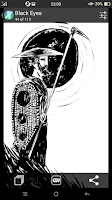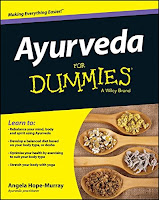Dying to Be Me is Anita Moorjani's candid memoir. It would have been a normal memoir of an Indian immigrant growing up in Hong Kong, if it wasn't because Anita had a remarkable Near Death Experience (NDE). Although there are many books and documentaries on NDE, Anita's story is unique because, unlike most NDEs, it involves a medically checked healing from a terminal cancer (lymphoma stage 4B), which occurred soon after her return from "the other realm". Although she received the first doses of chemotherapy when she came out of her comma, the medical profession cannot explain the way and speed of Anita's full recovery.
Anita's memoir takes us from her childhood dreams, her young self, her cultural and gender issues, and her personal life, to the years of deteriorating lymphatic cancer until she was hospitalised, her organs shutting down, and her family was told that she had a few hours of life left. Anita entered a comma, which was the moment in which she also experienced the NDE. Anita shares with us what she experienced during her NDE (a state of pure consciousness and love, a state of oneness and bent time, in which the Universe is one and many at the same time). She shares with us, in a very intimate way, how her view of the world, life and afterlife changed dramatically, the set of synchronicity events that led to the publication of this book, and why she thinks she got sick and healed in such a remarkable way. The book has a final chapter with some questions and answers from people that are rather interesting.
This is a very fresh, warm and intimate narration of Anita's personal experience. I love that Anita does not preach anything, does not try to convince anybody of anything, and that she does not present herself as a victim or a warrior. She tells us her personal views and beliefs, and does not pretend to be a guru or have the key to "the truth"; she just wants to share her personal story with the world.
Although I don't agree with some of the things Anita says, I have a deep respect for people like her, who do not pretend to be anything and do not preach any religion or try to convert anybody, and, most importantly, walk the talk. I think the reader gets an unadulterated view of who Anita truly is from this book.
Anita's narration of her NDE is beautifully evocative and clear to understand, something that is remarkable because her experience is nothing that can be easily put into words. Her heaven is not a heaven that we are familiar with. I also love her comments on how she experienced life differently after her healing (when her focus, attention and priorities just were different), and what her beliefs are regarding the afterlife, past lives, reincarnation, organised religion, sickness, medicine, healing and human relationships among other subjects are. I also like the fact that the narration does not linger on the description of her sickness beyond what it is strictly necessary.
The book reads more like a transcription of a speech at times, unpolished and repetitive. Anita is not a writer, so in cases like this I blame the editor, especially when Hay House is the editorial house and they have the resources to edit a book properly. A better editor would have polished the book, still keeping the message and tone of the book intact, and would have advised the use of references when she mentions the medical investigation and verification of her medical records by oncologists Dr Jeffrey Long and
Dr Peter Ko. Otherwise, anybody could say that this is a made up story. Her website has a testimonial of both doctors, but, personally, if a medical report is mentioned, I want it mentioned and accessed in a footnote.
Now, something important. Anita says: "Even criminals are victims of their own limitations, fear, and pain. If they’d had true self-awareness to begin with, they never would have caused any harm. A different mind-set—for example, a complete state of trust instead of fright—can turn around even the most depraved person, the same way" (p. 149). She also adds: "We still judge perpetrators of crime as exactly that—criminals who deserve to be condemned, not only in this life but in the afterlife as well! We’re still unable to see them as victims of fear, creations of a reality that we, as a whole, have built." (p. 152).
I agree that many people become criminals because of their specific circumstances, childhood abuse, poverty, drugs, hanging with the wrong people, mental problems and so on and they have a good nature in essence. I agree that some criminals can rehabilitate and turn their life around. Yet, there are many people surrounded by the same circumstances who have never hurt anybody or done any damage to anybody. It is also true that there are people who had a good upbringing, a good childhood, grew up in affluent environments, were loved by their parents and turned out to be evil. Like psychopaths, like sociopaths, like malignant narcissists, like mass murderers and genocides, among others. These people do NOT have a soul, these people do NOT have empathy, goodwill, or remorse wired into their cells. There are too many examples of people leaving on bail "rehabilitated" to go out jail and kill, cold-heartedly, the first person they come across in the street (usually a woman). Even if the heaven Anita describes exists, and it is the way she says it is, she is a decent human being, so you expect a decent human being to experience afterlife the way she experienced it. Would a psychopath or genocide experience it the same? We don't know. Perhaps there is no afterlife, and we are all nothing, a bunch of dust with an expire date. That is another possibility. I don't want to be One with women's beaters, children rapists, serial killers, human genocides, mass murderers, psychopaths, or other people who, to me, do not have a soul or a milligram of pureness in them.
***
After reading this book I checked the Wikipedia's entry on the author. I am not surprised, but in a way I am, that statements from people who seem not to have read the book are presented as a critique on something supposedly said or claimed in the book and by the author. There is nothing I dislike more than "scientists" preaching. That is anti-scientific. Science does not preach, Science convinces with proven facts, and Science is not dogma, Science is learning and discovering, and modifying, and correcting.
You will find these statements in Moorjani's book, I think it is important to mention then, so people who are interested in reading the book do so with an open mind:
> It’s not my style to overtly teach people or tell them how to live their lives, nor do I like advising anyone on what changes they need to make, even if they ask.
> I’m not claiming to know any universal or scientific truths or to be anyone’s spiritual guru. Nor am I trying to start yet another religion or belief system. My only aim is to help, not convince.
> I don’t advocate that if we “believe” a certain way, we’ll eliminate disease or create an ideal life.
> I strongly believe that it’s not necessary to reach the extreme state of an NDE in order to heal or have a great purpose in life, I can see that my personal path has led me to this point.
> I absolutely do strongly believe that we all have the capacity to heal ourselves as well as facilitate the healing of others. When we get in touch with that infinite place within us where we are Whole, then illness can’t remain in the body.
> I don’t advocate “positive thinking” as a blanket prescription.
> Sweeping statements such as “Negative thoughts attracts negativity in life” aren’t necessarily true,
> Going out and changing the world doesn’t work for me,
> What flicked the switch, to turn the body around from dying to healing? As for my own situation, I know the answer…but it’s not something that can be found in medicine. (Yet, she accepted chemotherapy and visited regular Western doctors and hospitals during her sickness. She also says that she prefers Aryuveda or Chinese Medicine to Western. Well, that is respectable, even if it is not our cup of tea).
***
I am a sceptic about NDE. Firstly, I have never had one. Medical science gives reasonable experiences about why people having a NDE experience what they experience. However medical experience is not able to explain how a person who is officially dead can see and hear conversations on the room, or a person in coma can hear conversations that are not taken place in the same room or building, or why people like Anita can heal in record time from terminal cancer. On the other hand, there is an interest among some evangelical Christian groups to turn any NDE into a seal of approval to their specific views on heaven and spirituality, and that is never acceptable (or respectable) to me. In that regard, Anita can be set apart from the rest. Is the NDE experience the result of the firing up of the chemicals in the brain when this is dying or is is a door to the source/heaven? We don't know. There is not reply to this yet. The main proof is out there in the world of the dead. I recommend watching a quite neutral documentary by the
BBC with both sides of the coin presented. Then, read Anita's book.
***
Dying to be Me is food for thought, and food for the soul even if you don't think you have one. Even if you are an atheist or agnostic, or even if you think that the story is made-up, there is an undeniable wisdom in the book that we all need to remind ourselves of regularly, and many pearls of wisdom and views of the world that resonate with me.


































